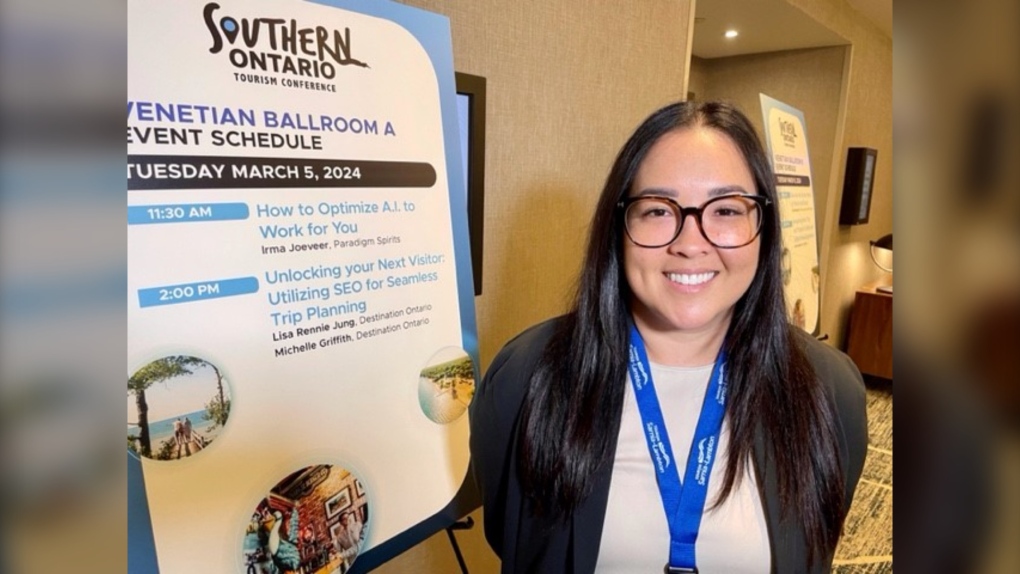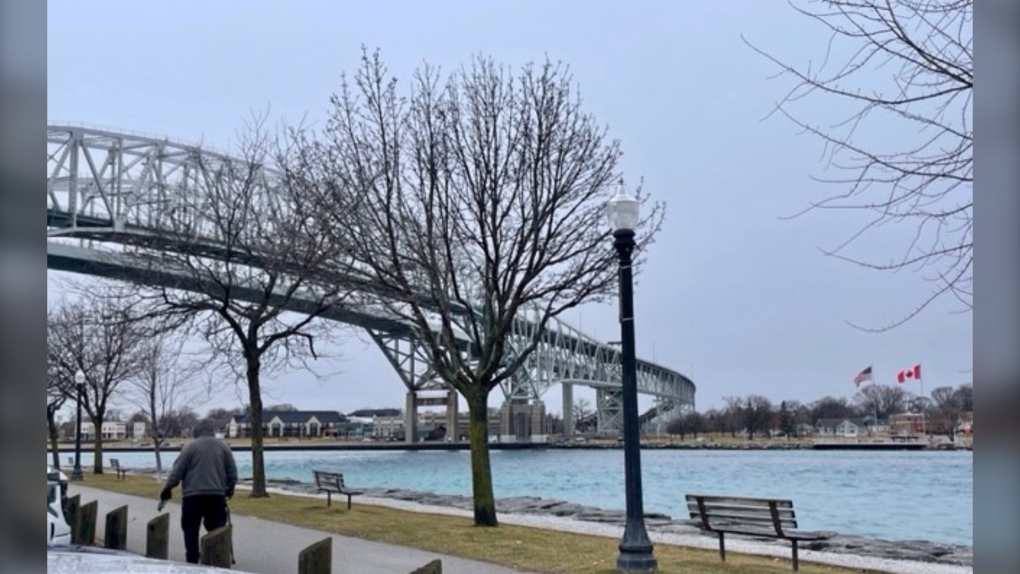'Almost there': Ontario tourism industry recovering
The hard-hit Ontario tourism industry has almost recovered from the COVID-19 pandemic.
“We are almost at 2019 levels, but we need to improve, and we need to get to the next level,” said Andrew Siegwart, president of the Tourism Industry Association of Ontario (TIAO).
His words were a comfort to the 250 attendees at the annual Southern Ontario Tourism Conference held in Sarnia, Ont. on Tuesday.
After years of lockdowns and border shutdowns, most in attendance appeared upbeat.
“What we’ve seen in London, especially in the last year or so, is the numbers have certainly gone up. Our hotel rates are up, our occupancy rates are up,” said Natalie Wakabayashi of Tourism London.
The president of Tourism Sarnia-Lambton agrees with the statistics when it comes to Canadian travelers.
 Andrew Siegwart, president of the Tourism Industry Association of Ontario, speaks at the Southern Ontario Tourism Conference in Sarnia, Ont. on March 5, 2024. (Sean Irvine/CTV News London)
Andrew Siegwart, president of the Tourism Industry Association of Ontario, speaks at the Southern Ontario Tourism Conference in Sarnia, Ont. on March 5, 2024. (Sean Irvine/CTV News London)
But Mark Perrin said it remains a struggle to attract Americans, and added U.S. leisure visits remain well below pre-pandemic levels.
“So, we have some work to do. I feel we’ve got to get another 20 to 25 per cent [of Americans] to cross the border and come to our attractions,” he explained.
To get there, TICO is recommending municipal and private tourism agencies focus on growing market share.
But amidst an ongoing industry labour shortage, it is a tough challenge to meet.
That is why TICO is calling for more municipalities to consider implementing a municipal accommodations tax (MAT).
Although not always popular with tourists, MATs fund tourism promotion and municipal infrastructure.
 Natalie Wakabayashi of Tourism London is seen during a conference in Sarnia, Ont. on March 5, 2024. (Sean Irvine/CTV News London)
Natalie Wakabayashi of Tourism London is seen during a conference in Sarnia, Ont. on March 5, 2024. (Sean Irvine/CTV News London)
London implemented the tax in late 2022.
“Four per cent is a pretty small tax compared to some other taxes that are on a bill,” Wakabayashi told CTV News London. “So, it can be seen as a negative, but from a tourism perspective it really is a positive.”
Another positive in the industry is the Canadian dollar.
With a 30 per cent cost saving to Americans, Perrin said it is imperative Ontario gets the message out that it pays to cross the border.
“I think as a Canadian, you’d go almost anywhere for a 30 per cent discount,” he said.
 Sarnia, Ont. is seen on March 5, 2024. (Sean Irvine/CTV News London)
Sarnia, Ont. is seen on March 5, 2024. (Sean Irvine/CTV News London)
CTVNews.ca Top Stories

'She will not be missed': Trump on Freeland's departure from cabinet
As Canadians watched a day of considerable political turmoil for Prime Minister Justin Trudeau and his government given the sudden departure of Chrystia Freeland on Monday, it appears that U.S. president-elect Donald Trump was also watching it unfold.
Canadian government to make border security announcement today: sources
The federal government will make an announcement on new border security measures after question today, CTV News has learned.
Two employees charged in death of assisted care resident who ended up locked outside building overnight
Two employees at an Oshawa assisted living facility are facing charges in connection with the death of a resident who wandered outside the building during the winter and ended up locked outside all night.
The Canada Post strike is over, but it will take time to get back to normal, says spokesperson
Canada Post workers are back on the job after a gruelling four-week strike that halted deliveries across the country, but it could take time before operations are back to normal.
Lion Electric to file for creditor protection
Lion Electric, a Quebec-based manufacturer of electric buses and trucks, says that it plans to file for creditor protection.
Canada's inflation rate down a tick to 1.9% in November
Inflation edged down slightly to 1.9 per cent in November as price growth continued to stabilize in Canada.
Transit riders work together to rescue scared cat from underneath TTC streetcar
A group of TTC riders banded together to rescue a woman's cat from underneath a streetcar in downtown Toronto, saving one of its nine lives.
Trudeau considering his options as leader after Freeland quits cabinet, sources say
Chrystia Freeland, Canada's finance minister, said in an explosive letter published Monday morning that she will quit cabinet. Here's what happened on Monday, Dec. 16.
Teacher and a teenage student killed in a shooting at a Christian school in Wisconsin
A 15-year-old student killed a teacher and another teenager with a handgun Monday at a Christian school in Wisconsin, terrifying classmates including a second grader who made the 911 call that sent dozens of police officers rushing to the small school just a week before its Christmas break.


































